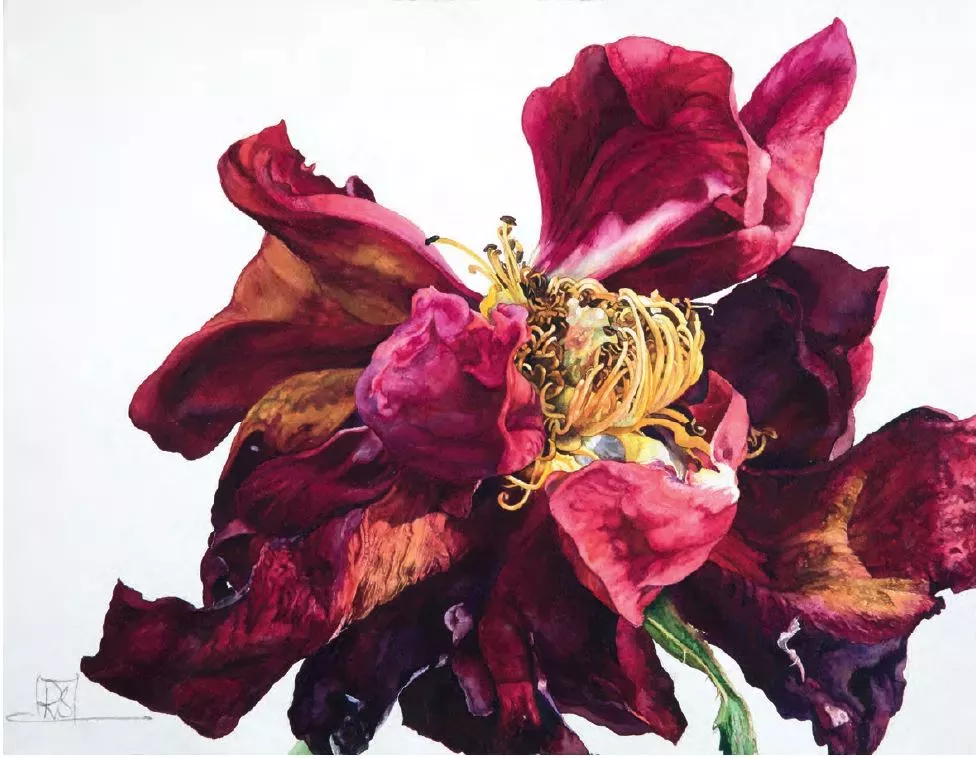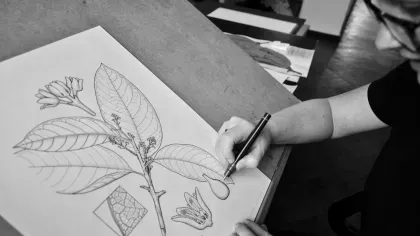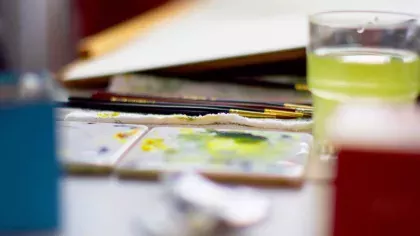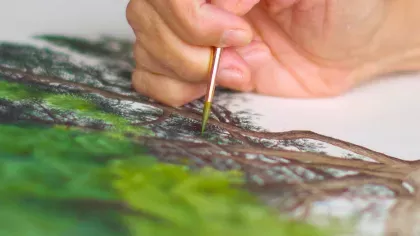28 January 2020
Dr Shirley Sherwood shares her insights on modern botanical art
Dr Shirley Sherwood talks about the evolution of botanical art, current trends, and the stories behind our latest exhibition.

A beautiful fusion of art and science, botanical art has an important role in documenting and identifying plants. Artists around the world produce work that plays a major part in botanical discovery.
Celebrating 30 years of collecting this vital artform, our latest exhibition in the Shirley Sherwood Gallery brings together contemporary work from talented artists who are the very best in the field.
Dr Sherwood explains how she's built her collection, what makes a great painting, and why there's more to botanical art than meets the eye.
Botanical art tells powerful stories
"The composition of a painting is what gives it 'oomph' and will often tell a story.
I like to collect contemporary paintings with unique compositions that tell a story about the plant and how it interacts with its environment.
Many of the paintings in the exhibition show the details of a plant, from flower to seed. A painting of a Siberian iris (Iris siberica) shows the plant in development beautifully. The buds are at different stages of growth and the rhizome are included, showing aspects of the growing cycle."

"Some of the work in the exhibition conveys political messages about the environment, such as paintings by renowned artist Margaret Mee. She made 15 trips to the Amazon in her lifetime, and was angry about the destruction of the rainforest.
She painted plants in their environment to highlight how much they relied on their rainforest habitat and how essential it is to protect this environment."

Botanical art has evolved over time
"Contemporary botanical art has evolved from the days of traditionally life-sized paintings.
Some modern botanical artists are painting bigger now, with plants magnified and zoomed in. This giant poplar leaf (Populus x canadensis) by Jess Shepherd is a beautiful example, as she has magnified it to draw attention to its subtleties of colour and venation.
Paintings like this force you to look again at plants, which we often don't pay much attention to and take for granted. Through the eyes of botanical artists, we're able to appreciate the tiny details of specimens.
Larger plants can be painted life-sized, to give people a sense of their impressive size in the wild. A beautiful example of this in my collection is Sue Herbert's gunnera leaf, which she painted life-sized using the largest watercolour paper she could source to make it completely realistic."

A tool to highlight rare and endangered species
"There are some beautiful depictions of endangered plants in my collection and some can survive in all sorts of extreme environments.
The orchid Phragmipedium kovachii is listed as critically endangered, and I have two paintings of it in my collection.
This is the first work ever completed of this new discovery by Angela Mirro, who went to Andean cloud forests of northern Peru to paint it. After it had been cultivated in Lima I commissioned another painting on vellum by Carol Woodin who painted the flower just past its prime.
This orchid has an extraordinary large bloom, up to 20 centimeters across and was discovered in 2001. Since then the whole area has sadly been depleted of this spectacular orchid, and over-collecting is a major threat to its survival in the wild."

Plants past their prime
"In the last six or seven years, I've seen a growing trend in painting flowers that are past their prime and starting to wilt.
These kinds of paintings really appeal to me, as there's a sense that the artist is really engaged with their subject and attentive to the plant life cycle.
A gorgeous example of this trend is Rosie Sanders' "Rose: Red sensation", which shows a rose as it’s starting to disintegrate. Depicting it at this stage of its life adds to the drama of the piece and creates interesting textures and colours."

"This painting by Regine Hagdorn depicts the stamen of a Mermaid rose, and shows the stages of decay. It goes beyond a traditional painting of the rose in full bloom and shows us more about a stage of its life, making it a really special artwork."

Changing perceptions
"Contemporary artists were never considered as good or as worthy as historical botanical artists, but I hope I’ve done something to change that perception.
I generally don’t buy old paintings (only the ones I really can’t resist!). Museums have many amazing collections of historical botanical paintings, and I didn't need my collection to compete with them.
Instead I wanted to showcase the gems of the modern botanical art scene, and celebrate the artists across the world producing incredible work today."
Visit the Shirley Sherwood Gallery to see these stunning artworks for yourself in the Modern Masterpieces exhibition.




